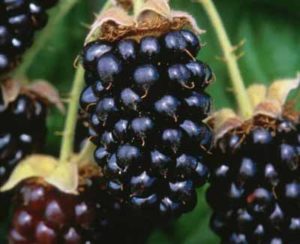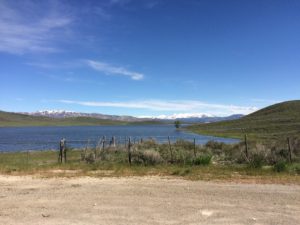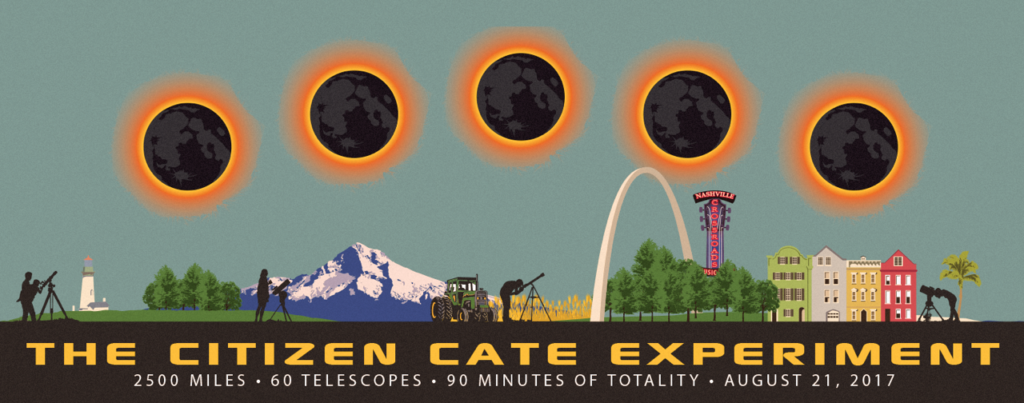
Over the Memorial Day weekend, we hosted a workshop for volunteers with the Citizen CATE Project, an ambitious citizen-science project to make a 90-min long movie of totality during the solar eclipse on August 21.
For the August eclipse, it only takes about 2-min for the Moon’s shadow to pass over anyone point on the surface of the Earth – after all, it’s traveling about 1,000 miles per hour.
But the Citizen CATE project aims to extend the duration of totality by outfitting sites all along the eclipse track with telescopes, cameras, Arduinos, etc.
That way, as the Moon’s shadow passes from west to east across the US, from one site to the next, the images can be cut together to produce a totality that lasts much longer than that at any one site. The resulting movie will quickly be uploaded to the internet and made available to eclipse-lovers the world over.
Such citizen science projects go back at least to 1715, when the preeminent Edmund Halley, of cometary fame, predicted the apparition of a solar eclipse to a precision of four minutes. He enlisted the aid of his fellow citizens to record the eclipse duration at more than a dozen locations throughout the British Isles. Compiling these data, he was able to significantly improve the Moon’s ephemeris and make much more accurate future predictions.
And so on Sunday, May 28, the Physics Dept at Boise State invited groups from sites across Idaho to campus for a training workshop hosted by Citizen CATE. The day was hot and sunny – perfect for sunburns and sungazing – and I’ve posted photos from our work below.
- Good morning, Boise.
- Welcoming everyone and unpacking the equipment
- Setting up the telescope
- Our fearless leader from Citizen CATE, Russ Lucas
- Setting up outside
- There’s the Sun. Success!
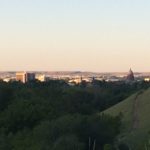
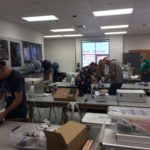

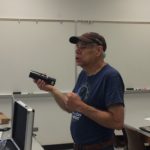
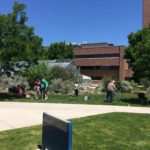
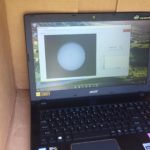
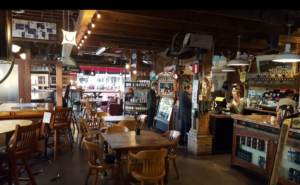
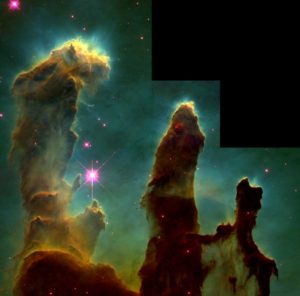 What do “bubbles” and “yellowballs” have to do with star formation? Identified in mid-infrared Galactic plane surveys, these objects are both named for their appearance in infrared wavelengths.
What do “bubbles” and “yellowballs” have to do with star formation? Identified in mid-infrared Galactic plane surveys, these objects are both named for their appearance in infrared wavelengths.